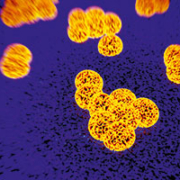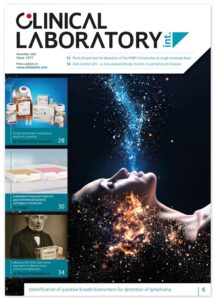Next generation sequencing and metagenomics – fighting the scourge of antibiotic resistance
The emergence of drug-resistant bacteria is one of the biggest public health challenges today. In April 2014, the World Health Organization (WHO) warned that a “post-antibiotic era – in which common infections and minor injuries can kill” is far from “an apocalyptic fantasy” and has instead become “a very real possibility.” Two months later, the newly formed World Alliance Against Antibiotic Resistance (with over 700 members in 55 countries) launched an urgent appeal to label antibiotic resistance “a grave global threat, and asking that antibiotics be declared a cultural heritage deserving legal protection.”
The ‘horror’ of carbapenem resistance
The march of bacterial resistance seems unremitting, even as the pipeline of new antibiotics is drying up. What is especially worrying for public health authorities, however, is a new “horror”. This refers to the growth of bacterial strains resistant to carbapenem – the ‘last resort’ antibiotic for unresponsive patients.
In several countries, carbapenem does not work in more than half of the people with Klebsiella pneumoniae, a major cause of hospital-acquired respiratory tract infections.
During the month of June 2014 alone, the US saw its first case of carbapenem-resistant (CR) Pseudomonas aeruginosa. In Canada, routine testing of raw squid in Saskatoon revealed a bacterial strain resistant to carbapenem. The case was the first of its kind in a food store, and demonstrates an enhancement of exposure risk “from a relatively small slice of the public” – such as travellers to risk zones or those recently hospitalized – to a much larger sector, according to Joseph Rubin, an assistant professor at the University of Saskatchewan.
Resistant genes are the real challenge
The Canadian case also illustrates the real, long-term challenge facing microbiologists. The bacterium in question, Pseudomonas fluorescens, is not risky for people with healthy immune systems. However, it carries a gene to produce carbapenemase, the enzyme inducing resistance to carbapenem.
Indeed, the real problem is less the spread of antibiotic-resistant bacteria than of antibiotic-resistant genes. Bacteria swap “small bits of DNA that carry genes like those for carbapenem resistance” and then “quickly pass it on to other species through gene swapping.”
A ticking time bomb
The implications are stark, and pose Scylla and Charybdis scenarios for public health authorities.
For example, third generation cephalosporins have been shown to fail in treating gonorrhea in much of Europe, Australia and Japan. Given that over 1 million people are infected globally with gonorrhea, every day, this is clearly a ticking time bomb.
Nevertheless, the use of carbapenems seems ill-advised. As the Canadian Medical Association Journal noted in 2011, this is because “gonorrhea readily shares its antibiotic resistance genes”, and using carbapenems “would invariably result in increased resistance … in other microbes. This life-saving antimicrobial would then have been ‘wasted’ on non–life-threatening gonococcal infections.”
Genomics and molecular methods
The above challenges necessitate a sophisticated arsenal of tools in the microbiology lab. Fortunately, breakthroughs in biotechnology, especially DNA sequencing and genomics, have shown some paths to the future.
In 1995, clinical microbiology witnessed the launch of the genomic era when the first bacterial genome of
Haemophilus influenzae was sequenced. So far, “over 1,000 bacterial genomes and 3,000 viral genomes, including representatives of all significant human pathogens,” have been sequenced – leading in turn to “unprecedented advances in pathogen diagnosis and genotyping and in the detection of virulence and antibiotic resistance.”
Sophisticated genomic tools based on molecular array techniques have been key to this success. Backed by high-speed computing, automated platforms and bioinformatics software, they provide labs with a host of new capabilities.
Molecular methods principally address a major limitation with previous phenotypic methods: the long period (weeks or even months) required to isolate some slow-growing bacteria. Indeed, the effort on the Haemophilus influenzae genome in 1995 had taken over a year, and although the Sanger sequencing used for this had long been considered a ‘gold standard’ , it soon faced “inherent limitations in throughput, scalability, speed and resolution.”
NGS offers exponential leap in sequencing
One of the most promising new molecular techniques is next-generation sequencing (NGS), which is also referred to as second-generation sequencing or SGS.
In terms of its basic principle, NGS parallels the capillary electrophoresis (CE) used in Sanger sequencing, with DNA fragments identified by signals as they are resynthesized from a template strand. However, while CE is limited to one or a few DNA fragments, NGS uses massively parallel processes to cover millions, and sequence several human genomes in a single run within days. This allows for identification of DNA base pairs covering whole genomes, and compare genetic differences down to resolution of a single base pair.
The latest NGS systems can generate over 300 Gb per flow cell, discover SNPs and chromosomal rearrangements, conduct transcriptome analysis, generate expression profiles, detect splice variants and quantify protein-DNA interactions.
Predicting antibiotic resistance, rapidly
NGS has already been used as a frontline weapon to identify bacterial pathogens and conduct epidemiological typing to define transmission pathways and support outbreak investigations – including cholera in Haiti in 2010 and and E. coli O104:H4 in Germany in 2011.
The technique is also seen as a way to predict antibiotic resistance, complementing phenotypic tests with the high-speed investigation of anomalies in results. It also resolves some of the biggest hurdles confounding traditional techniques, which require isolating resistance from environmental samples by PCR amplification or the cloning of cultured bacteria.
Both techniques, however, ignore large reservoirs of potential antibiotic resistance. PCR is incapable of broad-spectrum screening and is generally limited to known resistance genes. A bigger problem is that several bacteria are simply not culturable. This is an especially major challenge. Given that most antibiotics are produced by environmental microorganisms, most antibiotic resistance genes are likely to also have emerged outside a clinical setting.
Along with the new field of metagenomics, NGS has been harnessed to directly address these limitations.
The promise of metagenomics
Metagenomics was developed in the late 1990s for the function-based analysis of mixed environmental DNA species – and the existence of genes or genetic variations causing resistance. Metagenomics was directly aimed to address limitations in culturing and PCR amplification.
In its early years, metagenomics was principally targeted at recovery of novel biomolecules from environmental samples. The emergence of NGS, however, opened up wholly new frontiers – above all, to allow a fraction of the DNA in the sample to be isolated and sequenced, without cloning.
Metagenomics has been used to identify a range of antibiotic resistance genes, including tetracycline, aminoglycosides, bleomycin and β-lactamase.
The fight against resistant bacteria is likely to intensify in the years to come. In May 2014, ‘Cell Biology’ published the results of “the largest metagenomic search for antibiotic resistance genes in the DNA sequences of microbial communities from around the globe.” The findings illustrate the scope of the challenge: “bacteria carrying those vexing genes turn up everywhere in nature that scientists look for them.”
Challenges ahead
NGS is no doubt going to play a major role in this process. In spite of its novelty, it has already proven to be user-friendly for clinical laboratories. Last year, researchers showed it to be capable of integrating whole genome sequencing into the routine, daily workflow of a laboratory and rapidly resolve complex bacterial populations. NGS succeeded in identifying all ‘mixed-sample’ organisms taken from primary isolation plates. These included strains with scarce reads, notwithstanding an extremely low depth of coverage across its genome.
However, there is still some way to go. Key issues include the need to establish a reference genome database to archive, access and exchange the massive amount of data which is still to be generated. Some experts have called for the database to be open and accessible to the global scientific community.
A related challenge is that of interdisciplinary skills and collaboration. The analysis of NGS data requires a variety of specialists, namely “clinical and biomedical informaticians, computational biologists, molecular pathologists, programmers, statisticians, biologists, as well as clinicians.” Given that laboratories or other single institutions are unlikely to have all these skills in-house, an open database would again be the best means to find collaborative solutions.
Limits to Moore’s Law
The greatest driver of NGS adoption will be cost. The Human Genome Project cost around USD 3 billion. NGS can reduce this to “a few thousand dollars”, and achieve it much faster.
So far, NGS seems to be one of a handful of technologies challenging Moore’s Law, which describes a long-term trend of computing power doubling every two years. Compared to $95.2 million in costs per genome estimated in autumn 2001, the figure has since fallen by over 25,000 times. The decline has however not been uniform. Typically, costs had been dropping at an average of 70% a year between 2001 and 2007. In 2008, however, they fell massively, to $342,500 per genome in October compared to $7.1 million the previous year. This was wholly due to the move from Sanger-based to NGS sequencing technologies.
Costs per genome were estimated to be just over $4,000 in January 2014.
NGS, of course, has a variety of uses. It is seen as a tool to revolutionize molecular biology, molecular epidemiology and predict the evolution of bacteria. However, the fight against the menace of antibiotic resistance is likely to be one of its highest profile uses in the years to come.



